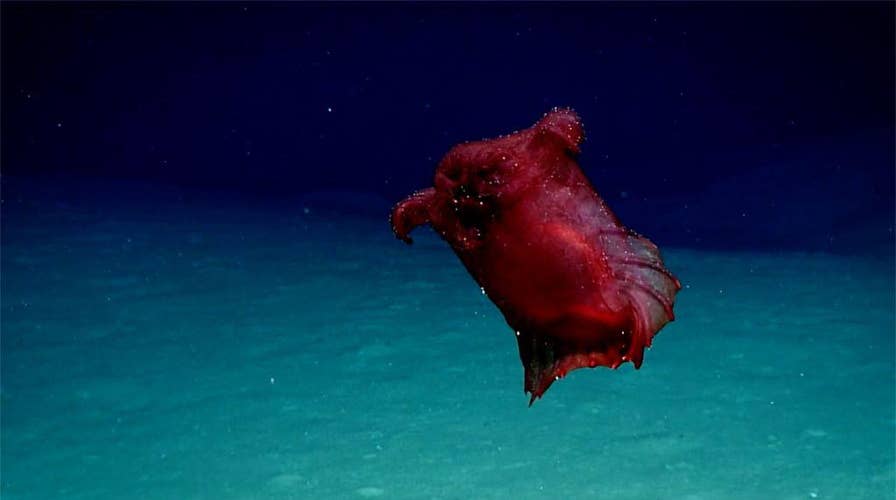'Headless chicken monster’ discovered in the Southern Ocean
A 'headless chicken monster,' or sea cucumber, has been filmed in the Southern Ocean for the first time.
The ocean is home to some sea creatures that will likely give you a fright.
Much of the ocean's marine life is yet to be discovered, with scientists estimating that a whopping 91% of ocean species remain unclassified to date, according to the National Ocean Service.
Of all the species that make up the ocean, many are absolutely breathtaking to behold, while others will send shivers down your spine to see.
MOST CHALLENGING FISHING WORLD RECORDS AND HOW TO BEAT THEM
For those that have been discovered, here are 12 scary sea creatures that have a frightful appearance.
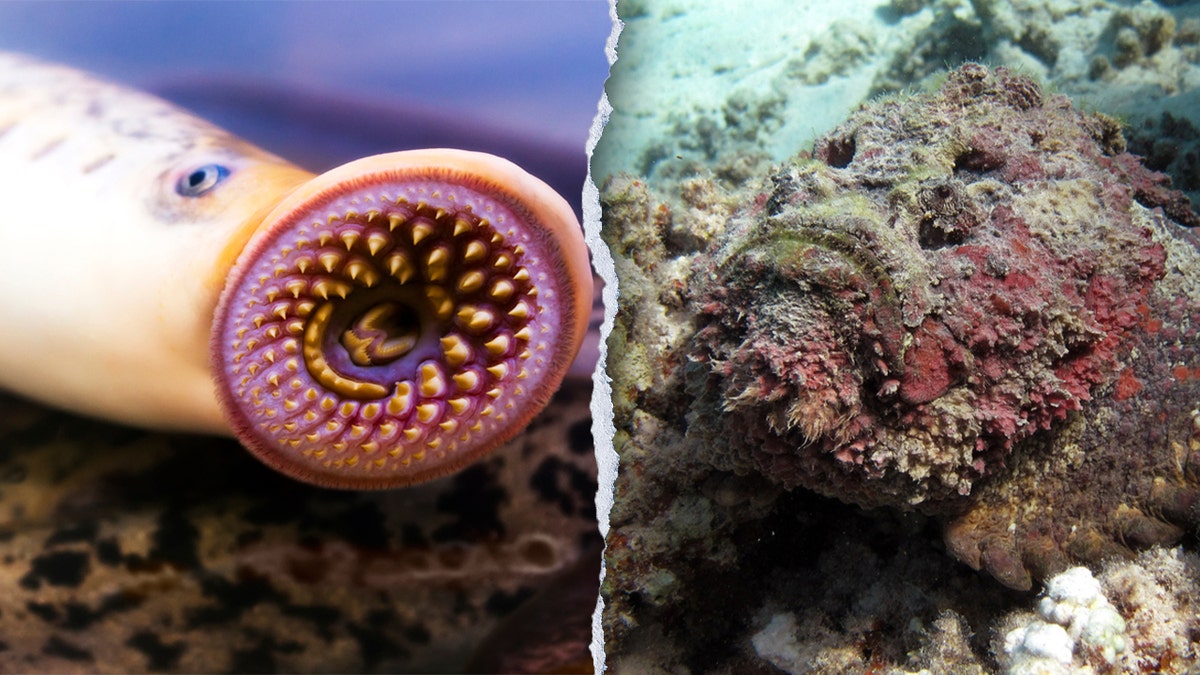
The deep blue ocean is made of many frightful creatures, like the two pictured above. (iStock)
- Lamprey (Petromyzontiformes)
- Sea pig (Scotoplane)
- Blobfish (Psychrolutes marcidus)
- Goblin shark (Mitsukurina owstoni)
- Frilled shark (Chlamydoselachus anguineus)
- Vampire squid (Vampyroteuthis infernalis)
- Giant isopod (Bathynomus giganteus)
- Stonefish or (Synanceia)
- Black swallower (Chiasmodon niger)
- Stargazer (Uranoscopidae)
- Anglerfish (Lophiiformes)
- Sloane's viperfish (Chauliodus solani)
1. Lamprey (Petromyzontiformes)
Lampreys are a parasitic fish native to the Atlantic Ocean.
The fish have skeletons made of cartilage and a round mouth full of sharp teeth.
MONTANTA 12-YEAR-OLD STUNNED AS HE REELS IN RECORD-BREAKING FISH: ‘I’M IN DISBELIEF'
These fish suck the blood and other body fluids from their prey.
In 1835, lampreys were first recorded in Lake Ontario, having reached their destination via the Welland Canal, according to the Great Lakes Fishery Commission.
They quickly spread to all five of the Great Lakes. Just a single sea lamprey kills 40 pounds of fish each year, according to the National Ocean Service.
Since then, there have been traps put in place that help control sea lampreys that invade the Great Lakes.
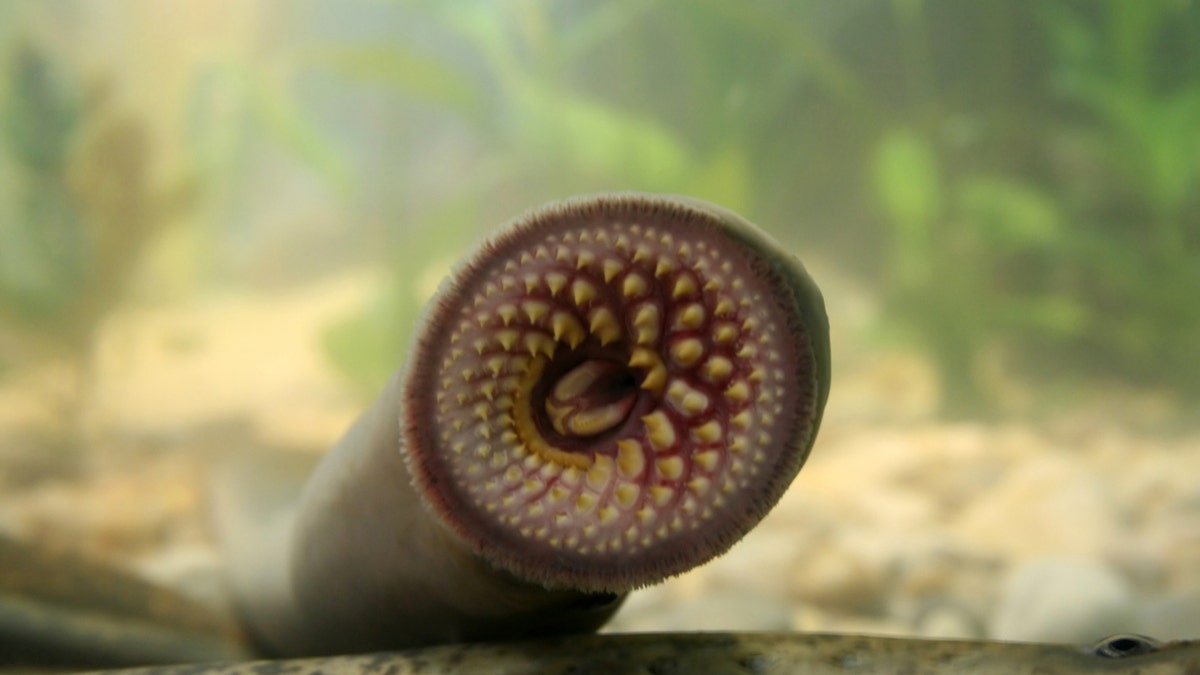
The mouth of the sea lamprey looks like a giant suction filled with tiny, but sharp teeth. (iStock)
2. Sea pig (Scotoplane)
Sea pigs can be found on the ocean floor; these crawl on little legs looking through the muddy seafloor for something to eat.
The sea pig's scientific name is the Scotoplane. The creature is quite tiny, ranging from just 1.5 to 6 inches in length.
Researchers have seen these small creatures in the hundreds moving about the sea floor.
NEBRASKA FISHERMAN REELS IN NEW FISH SPECIES IN STATE: ‘BRIGHT ORANGE WITH TURQUOISE’
3. Blobfish (Psychrolutes marcidus)
The blobfish is another one of the deep blue sea's strangest fish.
Its appearance gives off one similar to — you guessed it — a blob, and it is often found at the bottom of the ocean.
The blobfish will wait on the ocean floor for its unknowing prey to swim in its wake.
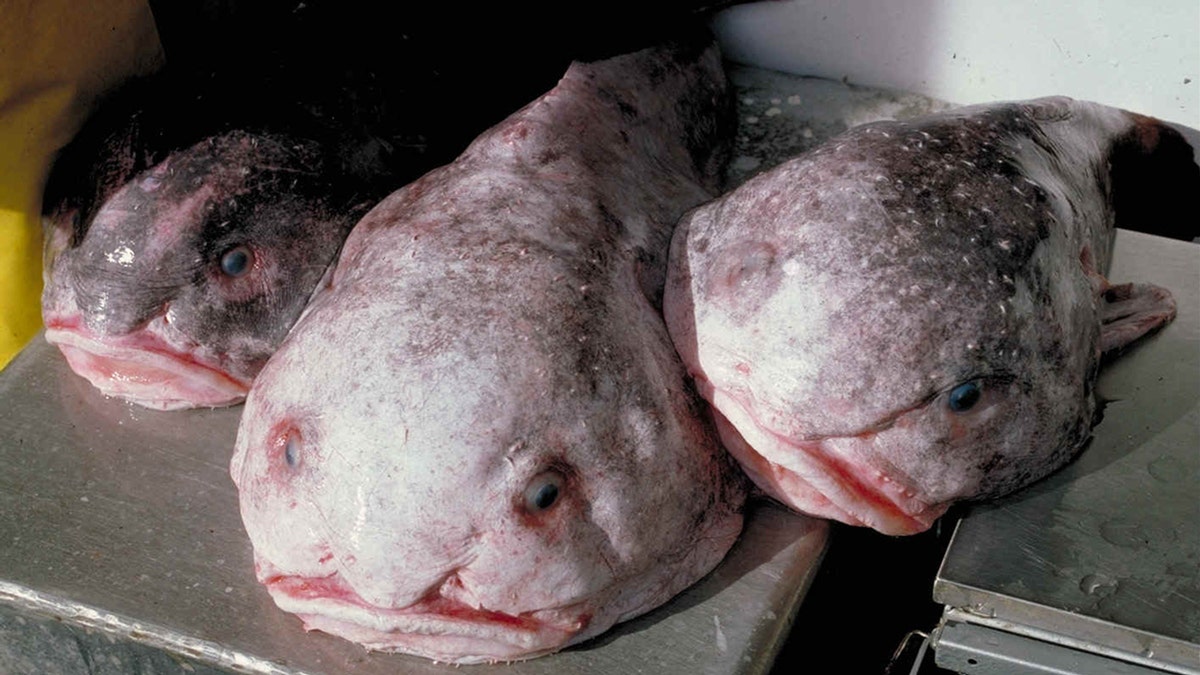
The blobfish is a flabby sea creature that often displays what looks like a frown across its face. (HUM Images/Universal Images Group via Getty Images)
4. Goblin shark (Mitsukurina owstoni)
The goblin shark looks very prehistoric.
This shark can be found deep in the ocean with its extremely long nose, small eyes and jagged teeth.
SWIMMING IN A SHARK'S HOME: TIPS FROM AN EXPERT FOR AVOIDING AND SURVIVING AN ATTACK
This rare species normally has a pinkish or purplish gray color.
5. Frilled shark (Chlamydoselachus anguineus)
The frilled shark has gills that have quite a frilled appearance, giving it its name, according to Oceana.
It moves similar to an eel, mainly seeking out squid to eat, per the source.
The frilled shark can grow close to 7 feet in length.
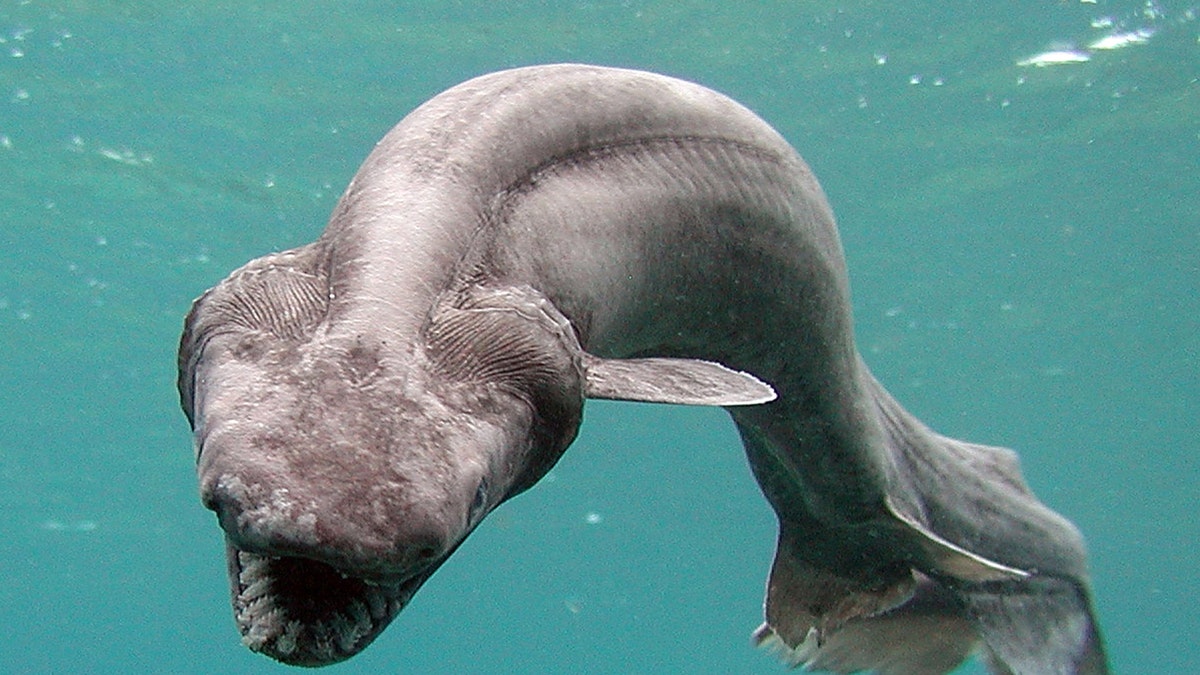
The frilled shark moves in a similar swimming motion as that of an eel. (Awashima Marine Park/Getty Images)
6. Vampire squid (Vampyroteuthis infernalis)
The vampire squid lives in dark areas of the ocean, where oxygen levels are low and very few predators to seek them out, according to Smithsonian Ocean.
Its scientific name, Vampyroteuthis infernalis, translates to "vampire squid from hell," though the vampire squid is not actually a squid, according to Monterey Bay Aquarium.
FROM SALMON TO SHARK, HERE ARE THE BEST AND WORST FISH FOR YOUR HEALTH, ACCORDING TO EXPERTS
Some of the vampire squid's most distinct characteristics are their eight arms and huge eyes.
7. Giant isopod (Bathynomus giganteus)
You may have never seen a giant isopod, but you have probably seen a roly-poly, which will give you a good idea of what the ocean creature looks like.
The giant isopod has seven pairs of legs and moves slowly, deep in the ocean.
Food is limited at the depths where giant isopods live, so they rely on both dead and alive animals as their meal, snacking on food that drops down to the bottom of the seafloor, according to the Aquarium of the Pacific.
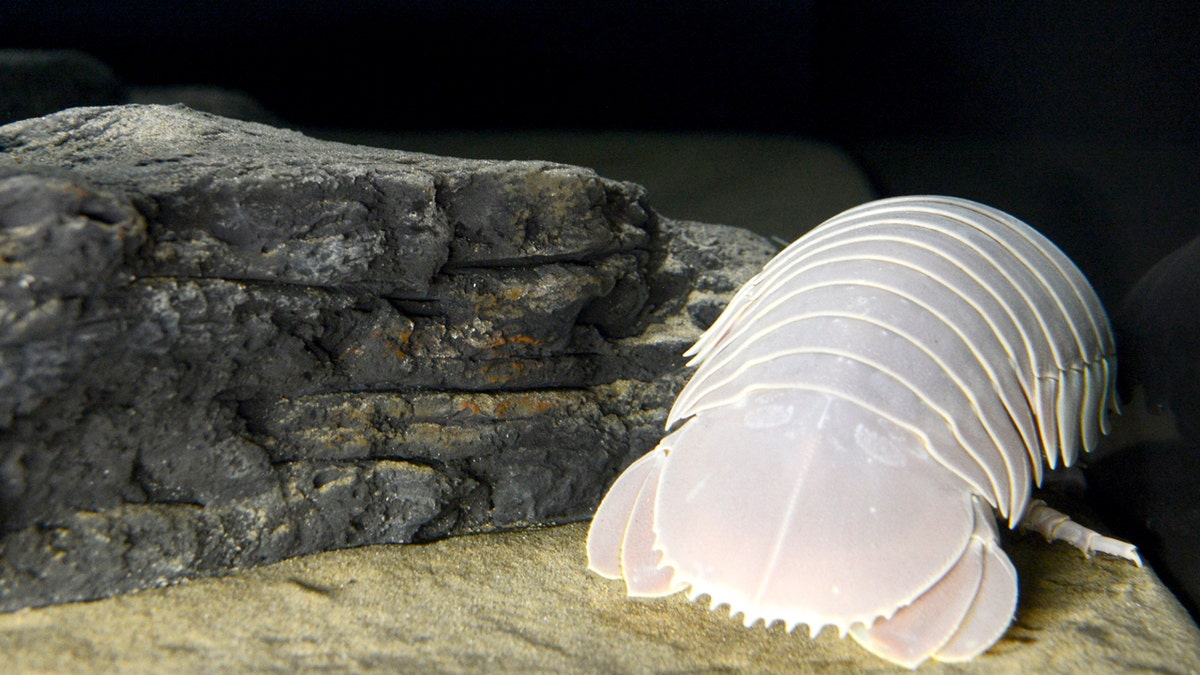
A giant isopod is a strange sea creature that resembles a roly-poly. (Doug Duran/MediaNews Group/The Mercury News via Getty Images)
They are known to go for long periods of time with no food at all. In fact, in aquariums, giant isopods have been recorded to go four years without food, according to the source.
8. Stonefish or (Synanceia)
If you take a quick glance at a photo of a stonefish, you may think you are looking at a reef in the ocean — but give it a closer look, and you will see the stonefish take shape.
RESEARCHERS DETECT EVIDENCE OF PREHISTORIC FISH IN CONNECTICUT RIVER
The stonefish is a master of camouflage and often hides itself in coral and rocky reefs.
This technique helps it sneak up on prey without moving much at all. The stonefish remains very still in its position and then ambushes its prey when it swims close.
This fish is the most venomous in the world, according to the Australian Museum, and can be extremely dangerous to humans.

The stonefish has impeccable camouflage skills. It's able to disguise itself in coral and reefs, waiting for unsuspecting prey. (Reinhard Dirscherl\ullstein bild via Getty Images)
9. Black swallower (Chiasmodon niger)
The black swallower has a very expandable stomach.
Its large stomach allows the black swallower to eat fish much larger than itself, at only 25 centimeters long, according to Smithsonian Ocean.
CLICK HERE TO SIGN UP FOR OUR LIFESTYLE NEWSLETTER
The fish is typically found with a brownish, black color.
10. Stargazer (Uranoscopidae)
The stargazer lies just beneath the sand.
The fish has sharp teeth, venomous spines and large eyes.
The eyes of these fish are particularly interesting, as they sit on top of their head, allowing them to peer out through the sand.

Stargazers bury themselves on the ocean floor, with only their eyes visible as they seek out prey. (iStock)
Hiding beneath the sand is often how they catch their prey, according to the Ocean Conservancy. They will wait with their bodies buried, eyes alert, until a fish comes into their view.
11. Anglerfish (Lophiiformes)
The anglerfish is actually a real creature of the deep, not just an animated monster from "Finding Nemo."
For more Lifestyle articles, visit www.foxnews.com/lifestyle
In the movie, Marlin and Dory are drawn in by the anglerfish's glow at the end of the rod coming out of its head before they are chased through the ocean by the scary fish.
This depiction is pretty similar to what an anglerfish does in the ocean.
The anglerfish is usually a blackish color and can grow to be around 4 feet.
CLICK HERE TO GET THE FOX NEWS APP
They do have a rod that emerges from their head, kind of like a fishing pole. The end of it glows, which draws in prey.
12. Sloane's viperfish (Chauliodus solani)
The fang-like teeth on a Sloane's viperfish make the creature rather terrifying.
Sloane's viperfish has teeth that are more than half the size of its whole head.
This creature is typically found in a darker silver/blue color.
